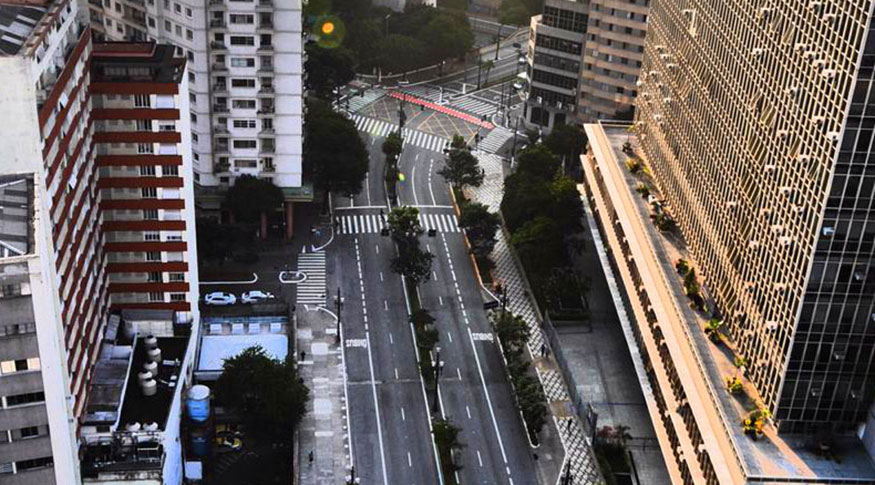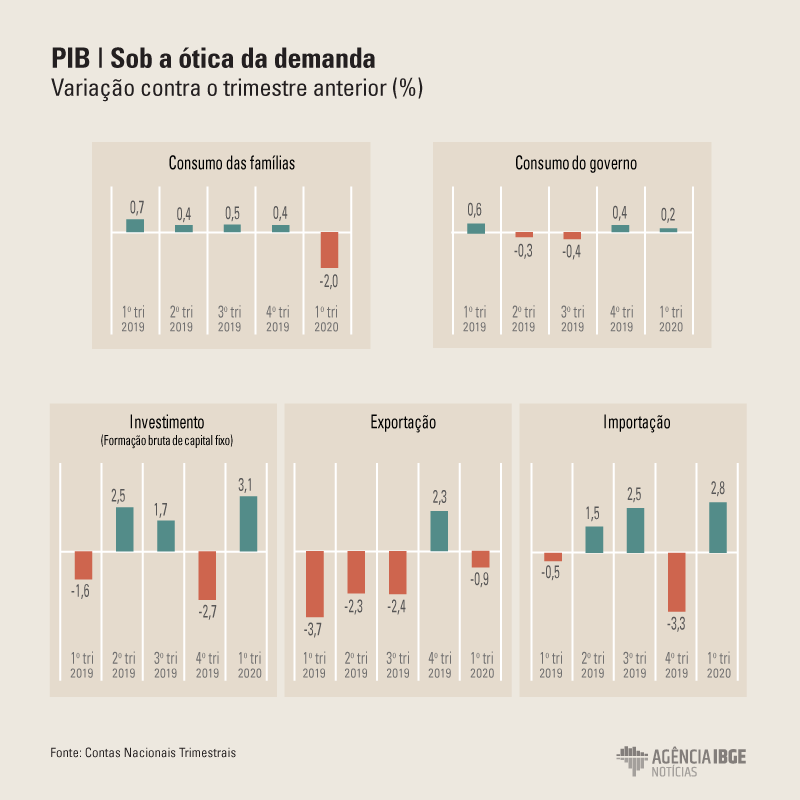System of National Accounts
In pandemic and lockdown scenario, GDP shrinks 1.5% in the first quarter
May 29, 2020 09h00 AM | Last Updated: June 01, 2020 04h50 PM

The national Gross Domestic Product (GDP) decreased 1.5% in the first quarter of 2020, in comparison with the last quarter of the previous year, influenced by the Coronavirus pandemic and social distancing, started in March. At current values, the GDP, which is the sum of the produced goods and services in the country, achieved R$ 1.803 trillion.
The data are from the Quarterly System of National Accounts released today (29) by the IBGE. In relation to the first quarter last year, the economy retreated 0.3%.
The GDP fall interrupts the sequence of four positive quarters and records the lowest result since the second quarter of 2015 (-2.1%). As a result, the GDP is at a similar level it was in the second quarter of 2012, regarding the period before the 2014’s economic crisis.
According to the IBGE’s National Accounts coordinator, Rebeca Palis, the economy retraction was affected, mainly, by the retreat of 1.6% in services, a sector that represents 74% of GDP. The industry also decreased (-1.4%), while agriculture increased (0.6%).
“What happened in Brazil was the same in other countries affected by the Coronavirus, the retreat of services for families as the establishments closed. Durable goods, vehicles, apparel, hairdressers, gyms, lodging and food were very influenced by social distancing”, she explains.
In services, the negative highlights were other services (-4.6%), transportation, storage and mailing (-2.4%), information and communication (-1.9%), trade (-0.8%), public administration, health and education (-0.5%), financial intermediation and insurance (-0.1). The only positive change was from real estate activities (0.4%).
Regarding industrial activities, the fall was leveraged by the mining and quarrying sector (-3.2%), but also recorded negative rates: construction (-2.4%), manufacturing industries (-1.4%) and electricity and gas, water, sewage and waste management (-0.1%).
“Civil construction is always influencing infrastructure negatively. The real estate activity was recovering, but due to social distancing, in March, the sector was affected. It also decreased the employment in the quarter and in the manufacture of the main inputs for construction”, Palis says.

Household consumption has the sharpest fall since 2001
The pandemic impacts also influenced the fall of 2% in household consumption.” It was the highest retreat since the electricity crisis in 2001”, says Palis, adding that household consumption weights 65% of the GDP. Government consumption remained almost stable (0.2%) in the first quarter this year, same level of the last quarter of 2019.
On the other hand, the investments (Gross Fixed Capital Formation) grew 3.1%, influenced by the net import of machinery and equipment in the petroleum and gas sector. The national production of machinery and equipment and construction decreased, says Palis.
The Brazilian trade balance decreased 0.9% in exports of goods and services, while imports of goods and services increased 2.8%.
“The exports were highly affected by the international demand. One of the most influential country for our exports is Argentina. Also China, which in the first quarter were the first country closing the frontiers, affecting our exports”, Palis concludes.





















